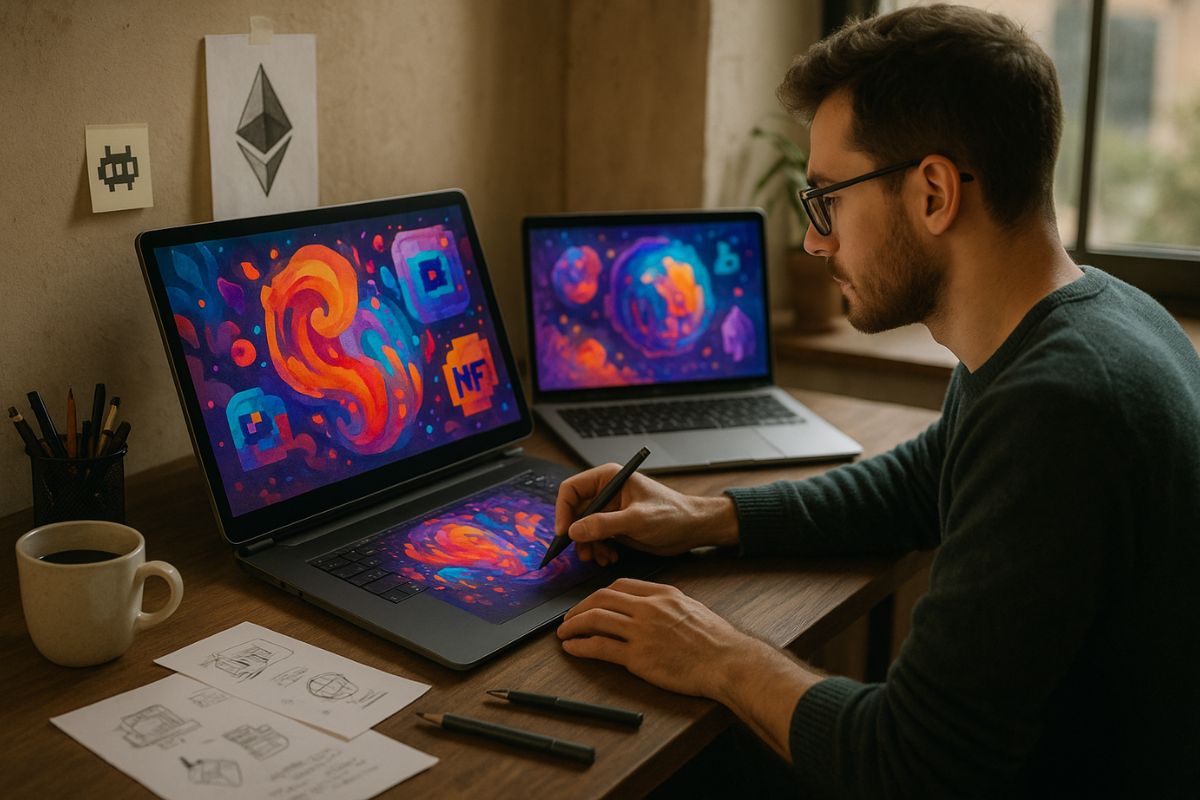Artists and creators are finding new ways to share their work through NFTs. These digital assets have opened doors for painters, photographers, designers, and even musicians to reach global audiences without needing galleries or labels. But there’s more to creating an NFT than just uploading a file. The creative process behind each piece plays a big role in how it’s received and remembered.
This process can feel different from traditional art because it blends creativity with technology. Artists not only think about visuals and sound but also about smart contracts, minting platforms, and metadata. That blend makes the process more flexible—but also more personal and intentional.
What This Article Covers About NFT Creation
If you’re thinking about starting your own NFT project or are just curious about how artists go from idea to digital asset, this article shares:
- How creators develop concepts for NFTs
- The steps they take to bring digital work to life
- Tools and platforms they often use
- The emotional and technical layers behind minting art
Whether you’re new to NFTs or already building your first collection, these points can give you a better sense of what goes into the process.
From Inspiration to Concept
Every NFT begins with an idea. That spark might come from a personal story, a social cause, or even a simple doodle that grows into something more. Just like traditional art, NFT creators pull from the world around them—but now they’re also thinking about how their work will live on a digital chain.
The concept phase is more than just figuring out what something looks like. It includes deciding what format it takes—still image, animation, audio, 3D render, or code-based interactive piece. Some creators spend weeks sketching and refining. Others start with digital drafts or pull from existing works and transform them into new formats fit for Web3.
Since NFTs allow for series or collections, creators often design pieces to work as part of a larger whole. This brings storytelling into the mix, where each asset adds to a narrative or theme.
Choosing the Right Tools
The tools used in NFT creation depend on the medium. Visual artists might use Photoshop, Procreate, or Blender. Musicians might work in DAWs like Ableton or Logic Pro. For coders, platforms like p5.js or custom JavaScript libraries help bring generative art to life.
But the tech doesn’t stop with the art itself. Once a piece is ready, the creator needs to prepare it for the blockchain. That means choosing a minting platform, writing a description, and setting rules through a smart contract. These rules might cover royalties, unlockable content, or even whether the NFT changes over time.
Some platforms make this process easier with templates and drag-and-drop tools. Others allow more customization if the creator is comfortable working with code. Either way, these decisions become part of the creative output.
The Emotional Side of Creation
For many artists, releasing an NFT feels more personal than putting work in a gallery. There’s a direct connection with collectors. Artists can message buyers, offer updates, or even build communities around their work.
This emotional link can shape the creative process. Some artists include hidden messages, Easter eggs, or bonus content for those who take the time to look. Others create pieces tied to major life events or causes that matter deeply to them.
That emotional charge often carries through to the minting moment. Minting an NFT means making it public, setting it in digital stone. It’s the point where the artist hands over part of their creation to the community. That feeling of exposure and vulnerability is real, and many creators talk about it like releasing a song or showing a painting for the first time.
Launching and Sharing the Work
Once the NFT is minted, the next step is sharing it. Some artists build hype through social media. Others use NFT-specific platforms like Foundation, Zora, or objkt to gain traction.
The launch often includes more than just dropping a link. Creators tell stories around the work, post behind-the-scenes content, or even create videos and podcasts about the process. This helps connect with people who care about more than just visuals—they want to know the artist and the meaning behind the project.
For collections, timing is everything. Some creators choose to stagger releases. Others put everything out at once. Each approach brings different challenges and creative decisions, especially around pricing and promotion.
Growing with Feedback
After a drop, the creative process doesn’t always end. Artists pay attention to which pieces get the most interest, which stories people connect with, and what collectors are asking for.
This feedback loop helps shape future projects. Some artists update metadata or offer follow-up drops. Others use fan input to guide future themes or collaborations.
It’s also common to see NFT artists experiment more over time. As they learn from each drop, their style, technique, and storytelling get stronger. What starts as a one-off piece can evolve into an ongoing series or brand.
Why It’s More Than Just a File
The process of creating an NFT brings together vision, tools, emotion, and interaction. It’s not just about pixels or code—it’s about what those things represent. Behind every minted token is a person who imagined something worth sharing, spent time shaping it, and trusted the blockchain to carry it forward.
For collectors and fans, understanding this process adds meaning to what they buy. It turns a digital asset into something more human. And for creators, it’s a way to express, connect, and grow—all while shaping a new kind of art world.
Art has always evolved with technology. The NFT space is no different. Each piece is shaped by creativity, emotion, and intent. And that process—though digital—is still deeply personal.

No Responses